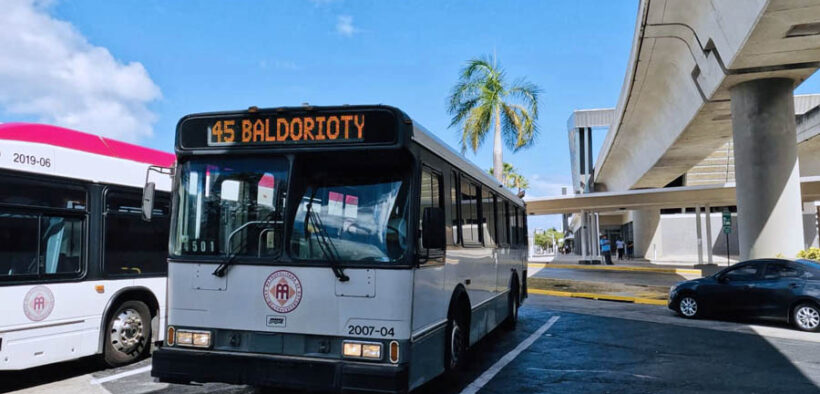‘Above average’ public transit spending fuels private vehicle use

The government of Puerto Rico spent about $40 per capita on public transit — in this case, the bus system and the Urban Train — in 2019, placing the island among states and territories spending “above average” amounts to move people around, according to an analysis by Transportation for America.
Puerto Rico, whose population is estimated at about 3.2 million, ranked in the same bracket as Illinois, which has a population of 12.8 million and spends $39 per capita, and Washington, whose population is 7.7 million and spends $36 per capita of its own funds on public transportation, the analysis shows.
But while the local government pumps its own funds into public transit, the island still has one of the highest vehicle miles traveled (VMT) across the United States, averaging about 18,000 miles per capita per year, according to data for 2019.
The island outranked all states and territories, followed by Wyoming and Alabama in the top bracket of places with the highest VMT, and therefore lowest transit ridership, as people favor using their personal vehicles.
The report by the private organization evaluates state transit access and ridership. The lack of data for Puerto Rico raises concerns about the accessibility and usage of public transit systems on the island, and puts a spotlight on the need for investment in transportation infrastructure to improve residents’ quality of life and strengthen the economy.
Puerto Rico is considered to have one of the most cars per square mile in the world, with 146 vehicles per street mile and 4,300 vehicles per square mile, according to Global Fleet.
The $40 per capita that the Puerto Rico government is spending is coupled with federal funding, which adds about another $25 per capita, Transportation for America revealed.
“Looking amongst its peers in the U.S., I would say Puerto Rico is above average. Government should be spending money on [public] transportation for people,” said Benito Pérez, policy director of Transportation for America, whose family is from Puerto Rico.
“They’re above average and that could also just be because of Puerto Rico’s unique circumstances. The last I recall, more than half of the population lives in the San Juan metro area. So, you have the bus system and other options. But once you leave San Juan, ‘carros públicos’ is all you have,” he said.
Puerto Rico’s public transportation system has faced challenges in recent years, with limited resources and infrastructure hindering its ability to meet the needs of the population. The report suggests that the island’s public transit access falls short in comparison to other U.S. states and territories, impacting the daily lives of its residents.
The financial aspect of the report highlights the potential benefits of investing in public transportation. Improved transit access can lead to increased ridership, which in turn can generate revenue for the local economy.
Last year, the Biden administration announced a $1.06 billion allocation for Puerto Rico, to repair roads and bridges under the Infrastructure Investment and Jobs Act. However, no mention was made as to funds for public transportation.
However, Pérez mentioned that Puerto Rico is missing out on receiving “a lot more than $1 billion” if it were included in a slew of formula programs that apply to the other states and Washington, DC.
When asked about the possible extension of the 10.7-mile Urban Train light rail system, which in 2022 had a ridership of about 2.5 million passengers, Pérez said, “My thinking here is, why don’t you deal with the fundamentals first? With your existing bus system, to try to increase frequency, reliability and perhaps add dedicated bus lanes, so you don’t need to build an expensive, fancy light rail system.”





